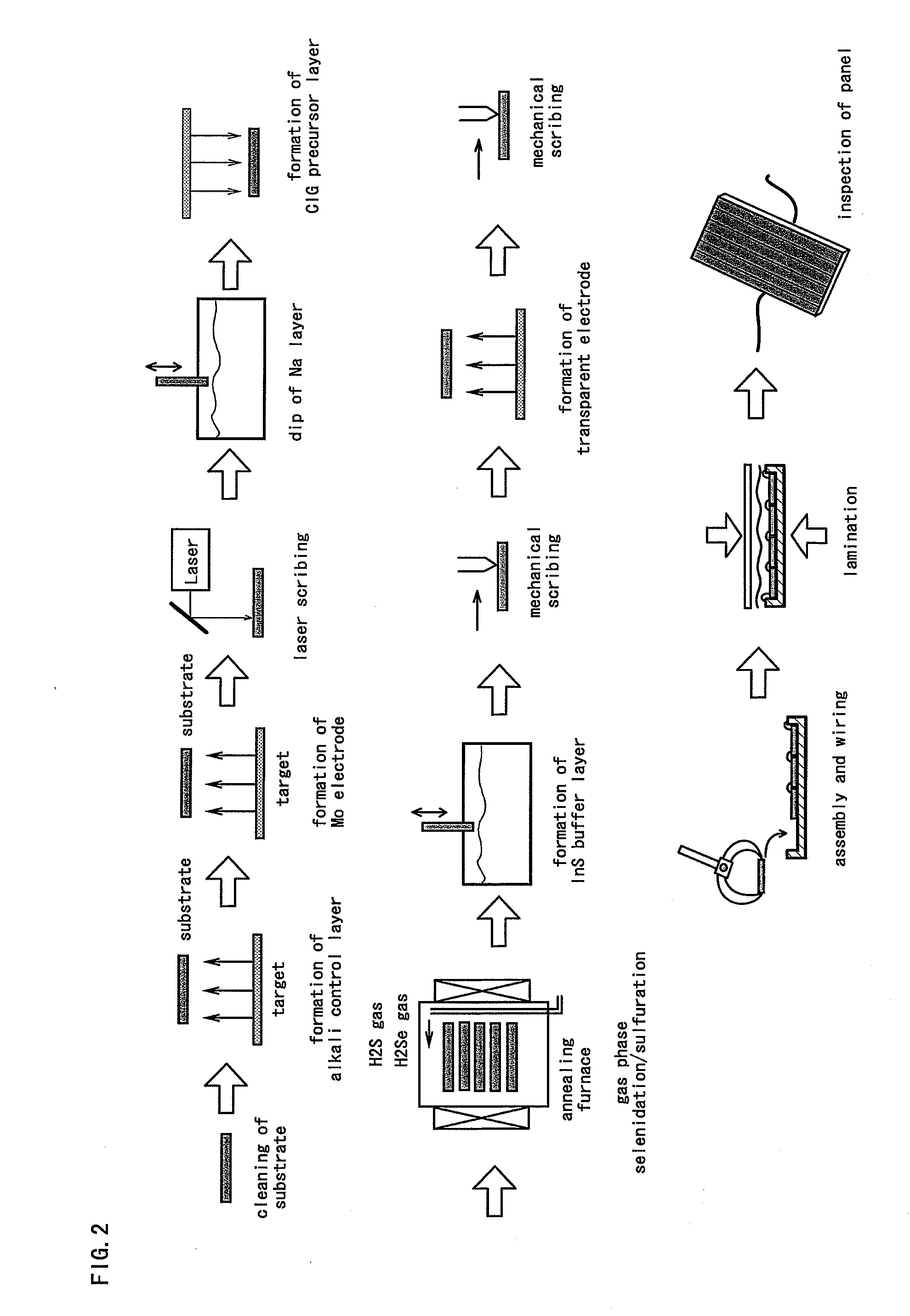Chalcopyrite Solar Cell
a solar cell and chalcopyrite technology, applied in the field of solar cells, can solve the problems of inability to introduce a scribing step using a metal needle, inability to manufacture cells having high conversion efficiency, and inability to adequately protect stainless steel substrates from hsub>, etc., and achieve the effect of high conversion efficiency
- Summary
- Abstract
- Description
- Claims
- Application Information
AI Technical Summary
Benefits of technology
Problems solved by technology
Method used
Image
Examples
Embodiment Construction
[0038]Prior to describing an embodiment of the present invention, a surface configuration of a laminated mica substrate will be described. FIGS. 4(A) and 4(B) show results of measurement of the surface configuration of a laminated mica substrate at arbitrary two points. In FIG. 4, the abscissa indicates the horizontal position in the laminated mica substrate, and the ordinate indicates the vertical position. The laminated mica substrate is characterized in that the height varies very steeply, and the maximum height difference is large (in other words, the aspect ratio is high). As is apparent from FIG. 4, there is a maximum height difference of 5 to 6 μm in a horizontal range of several tens of micrometers. It can be considered that the large height difference is due to the method of manufacturing the laminated mica. Specifically, the laminated mica is manufactured by mixing pieces of pulverized mica with a resin. The pieces of pulverized mica exist on the surface and thus result in...
PUM
| Property | Measurement | Unit |
|---|---|---|
| thickness | aaaaa | aaaaa |
| thickness | aaaaa | aaaaa |
| surface roughness | aaaaa | aaaaa |
Abstract
Description
Claims
Application Information
 Login to View More
Login to View More - R&D
- Intellectual Property
- Life Sciences
- Materials
- Tech Scout
- Unparalleled Data Quality
- Higher Quality Content
- 60% Fewer Hallucinations
Browse by: Latest US Patents, China's latest patents, Technical Efficacy Thesaurus, Application Domain, Technology Topic, Popular Technical Reports.
© 2025 PatSnap. All rights reserved.Legal|Privacy policy|Modern Slavery Act Transparency Statement|Sitemap|About US| Contact US: help@patsnap.com



